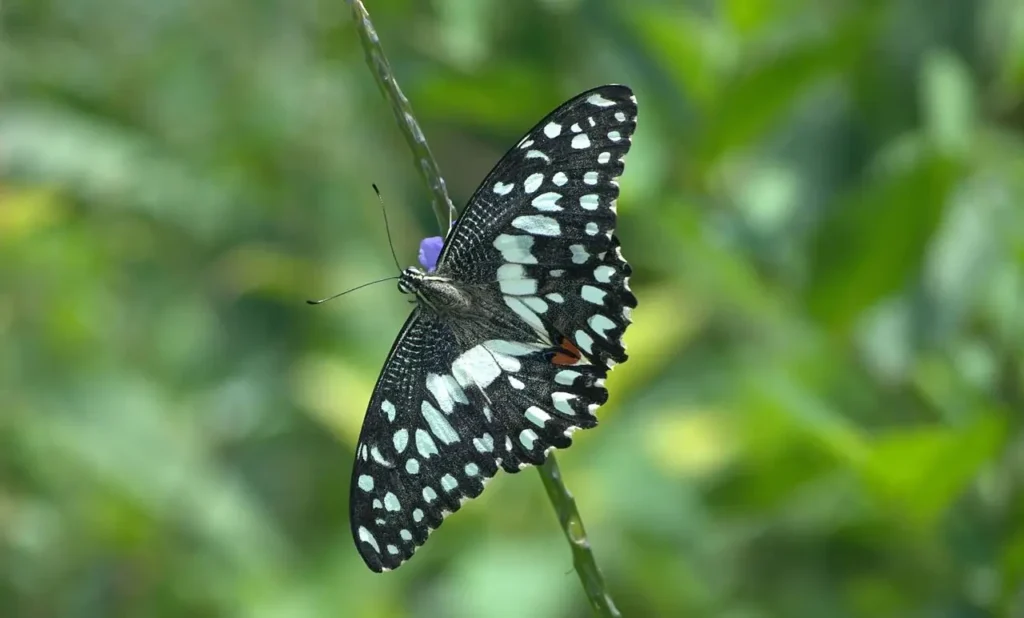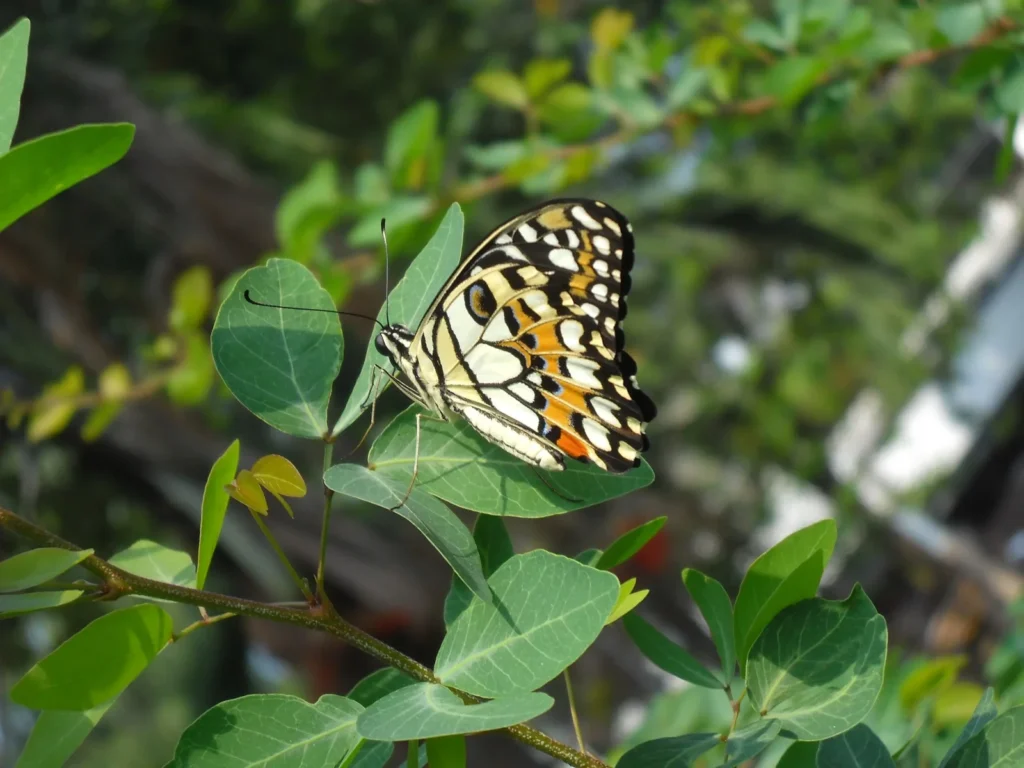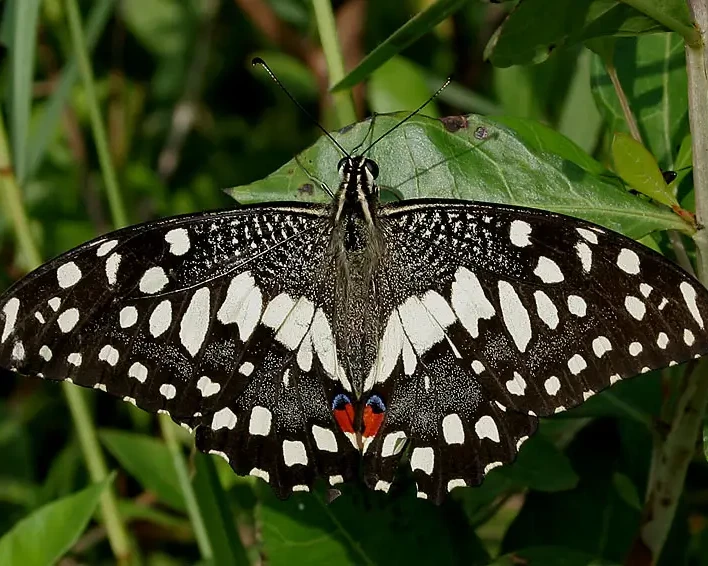Citrus hawkmoth (Daphnis nerii), also known as oleinik hawk moth, is a large, brightly colored moth from the family Sphingidae. It is known for its unique wing pattern, resembling camouflage colors of military uniformsIt also has powerful wings that allow it to fly fast and cover long distances.
Like most hawk moth species, the citrus Hawk moth is active at night and plays an important role in nature, pollinating flowers during its flight. It is found in warm regions of Europe, Africa, and Asia, as well as parts of Australia.
In this article, we will look at appearance, life cycle, habitat, behavior and role of the citrus hawk moth in the ecosystem.

Scientific classification
🔬 Classification of citrus hawkmoth:
✔ The Kingdom: Animals (Animalia)
✔ Type: Arthropods (Arthropoda)
✔ Class: Insects (Insecta)
✔ Row: Lepidoptera (Lepidoptera)
✔ Family: Brazhnikovye (Sphingidae)
✔ Gender: Daphnis
✔ View: Citrus hawkmoth (Daphnis nerii)
📌 Interesting!
This species was first described by the Swedish naturalist Carl Linnaeus in 1758.
Appearance and structure
Citrus hawkmoth – a large and attractive butterfly, which has a bright and complex pattern on the wings.
, Main Features:
✔ Wingspan: 8-12 cm
✔ Color scheme: green-brown with pink and white flecks
✔ Wing shape: elongated, pointed
✔ Oko: large, complex projects
✔ Tentacle: short, filiform hair
✔ Body: robust, streamlined design
🔹 Key features of painting:
✅ The color varies from from dark green to brown
, The drawing resembles masking camouflage
✅ On the dorsal part of the body there are two light wave-like stripes
✅ Some individuals have purple or pink tints
📌 Interesting!
An adult butterfly has excellent camouflage abilityby merging with the leaves or bark of trees.
Habitat and distribution
🌍 Where does the citrus hawk moth live?
This view thermophilic, so it is most often found in tropical and subtropical regions.
✅ Distribution regions:
• Africa - Egypt, Morocco, South Africa
• Europe - Spain, Italy, Greece, the Balkans
• Asia - India, China, Japan, Indonesia
• Australia - northern territories
🔹 Typical habitats:
✅ Forests and shrubs
Сады Citrus orchards and plantations
✅ Wet tropical jungle
✅ Near water bodies and rivers
📌 Interesting!
Citrus hawk moth can migrate long distancesflying across deserts and seas.

Life cycle and reproduction
The butterfly passes four stages of developmentwhich continue together 4-6 weeks.
Стадії стадии развития:
✅ Egg - 7-10 days
✅ Caterpillar - 2-3 weeks
✅ Pupa - 2-3 weeks
✅ Imago (adult butterfly) - lives 1-2 months
🔹 How does citrus hawkmoth reproduce?
✔ Females lay their eggs on leaves of oleander, citrus trees or periwinkle
✔ After a week they appear bright green caterpillars
✔ The caterpillar passes by 4-5 lines, reaching the length of up to 8 cm
✔ The doll has brown or greenish coloration, overwinters in the soil
📌 Interesting!
The citrus hawk moth caterpillar has obvious spots on the headthat remind you of snake eyes "it helps deter predators."
Food habits and role in nature
What does a citrus hawk moth eat?
✅ Caterpillar:
* Oleander leaves (Nerium oleander)
* Citrus trees (lemon, orange, tangerine)
* Periwinkle (Vinca)
✅ Imago (adult butterflies):
* Flower nectar (tobacco, jasmine, hibiscus)
* Overripe fruit juice
🔹 What benefits does hawk moth bring?
✔ Pollinates flowersby promoting their reproduction
✔ Regulates the plant populationby eating their leaves
✔ There are an important element of the food chain
📌 Interesting!
Adult citrus hawkmoth it has a long probosciswhich allows it to feed on nectar from deep flowers.

Natural enemies and threats
🔹 Who hunts the citrus hawk moth?
✅ Birds-starlings, owls
Parasitic wasps-lay their eggs in the caterpillar
✅ Small mammals-mice, bats
🔹 Main threats:
⚠ Loss of the natural environment
⚠ Chemical pesticides
⚠ Climate change
📌 Interesting!
In some countries, citrus hawkmoth protected area, as its population is declining.
Interesting facts about citrus hawkmoth
✔ The butterfly can reach speeds of up to 50 km / h
✔ The caterpillar can pretend to be a snakeWhen he feels in danger
✔ Citrus hawkmoth is found even in city gardens
Conclusion
Citrus hawkmoth (Daphnis nerii) – an amazing representative of moths, which plays an important role in nature. Its bright coloration, unique behavior, and ability to migrate make it one of the most interesting insects on OUR PLANET.
📢 Let's protect nature so that such beautiful views continue to delight us!